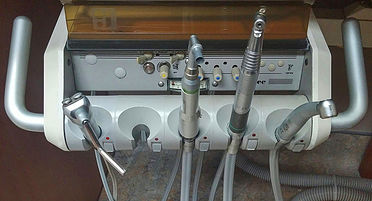A question I often get regarding pet dental work is, why the anesthesia? What about anesthetic free dental cleanings that are offered at the groomers?
As pet dental awareness month is coming to an end, dental disease unfortunately doesn’t end with it. Given just how common of an issue dental disease is, I thought I’d explain in a bit more detail what, and why we do things the way we do
Why the anesthesia? It’s just dental work.
Putting an animal under anesthetic is important in order to properly perform a dental cleaning, dental x-rays, as well as extractions if they are necessary. Most animals don’t sit still and say ‘Ah’ on command to allow a detailed and proper oral exam. Even in the best of animals, it is difficult to properly examine the back and inside of the mouth. When we are evaluating the teeth, we need to probe all around each individual tooth looking for bone loss, gingival recession, pockets, or areas of concern. Imagine trying to get the little dental mirror into the back of the mouth to look at each tooth in your pets mouth – I’ll bet that in most cases the answer is something along the lines of ‘good luck’. If there are any teeth of concern and we need to take dental x-rays, the animal has to be perfectly still. In addition, getting an animal to bite down on a digital x-ray plate without breaking it is not a gamble we’re willing to take since they tend to be quite expensive pieces of equipment.
Simply looking visually at the teeth is not adequate for a truly thorough dental evaluation. You can certainly get a rough idea of what to expect, but until you can properly get in the mouth to probe things and take radiographs, it is a bit of an educated estimate.
In addition to simply proper evaluation of the teeth, we have to perform the dental cleaning (+/- extractions if needed) as well. Some facilities including some pet stores and groomers will offer ‘anesthetic free cleanings’. These typically help to remove much of the visible calculus and tartar that you can see on the outside of the dogs teeth. This helps to improve the cosmetics as the teeth look visibly much cleaner, as well in mild cases will allow you to be better able to brush and clean along the gum line of the teeth. The issue is that the majority of dental disease occurs below the gum line where it is not visible, breaking down the bone in which the teeth reside. If you have a clean tooth crown (the visible portion) but an abscess under the gum line, the tooth can look visibly clean and healthy but still be painful and infected. Proper cleaning of the teeth requires scaling of the tooth along and underneath the gum-line. Having fingers and sharp pointy objects in an awake animal’s mouth is a bad idea for more reasons than one.
Dental freezing can allow lots of work to be done in people, including tooth extractions. In animals, we once again come back to the fact that we can’t explain what is going on, and thus the anesthesia. Sedation, while useful, is not reliable enough for us to work safely. Additionally, heavily sedated animals are at risk of aspiration and inhaling fluids which can lead to pneumonia, and thus anesthesia results in a safer procedure.
Long story short, as much as we don’t want to perform unnecessary anesthetics on any patient, anesthesia is vital to any proper thorough dental procedure and evaluation. We’re happy to discuss things further and answer any questions should you have them, but hopefully that provides a little explanation into why we still recommend a full general anesthetic for dental procedures.

